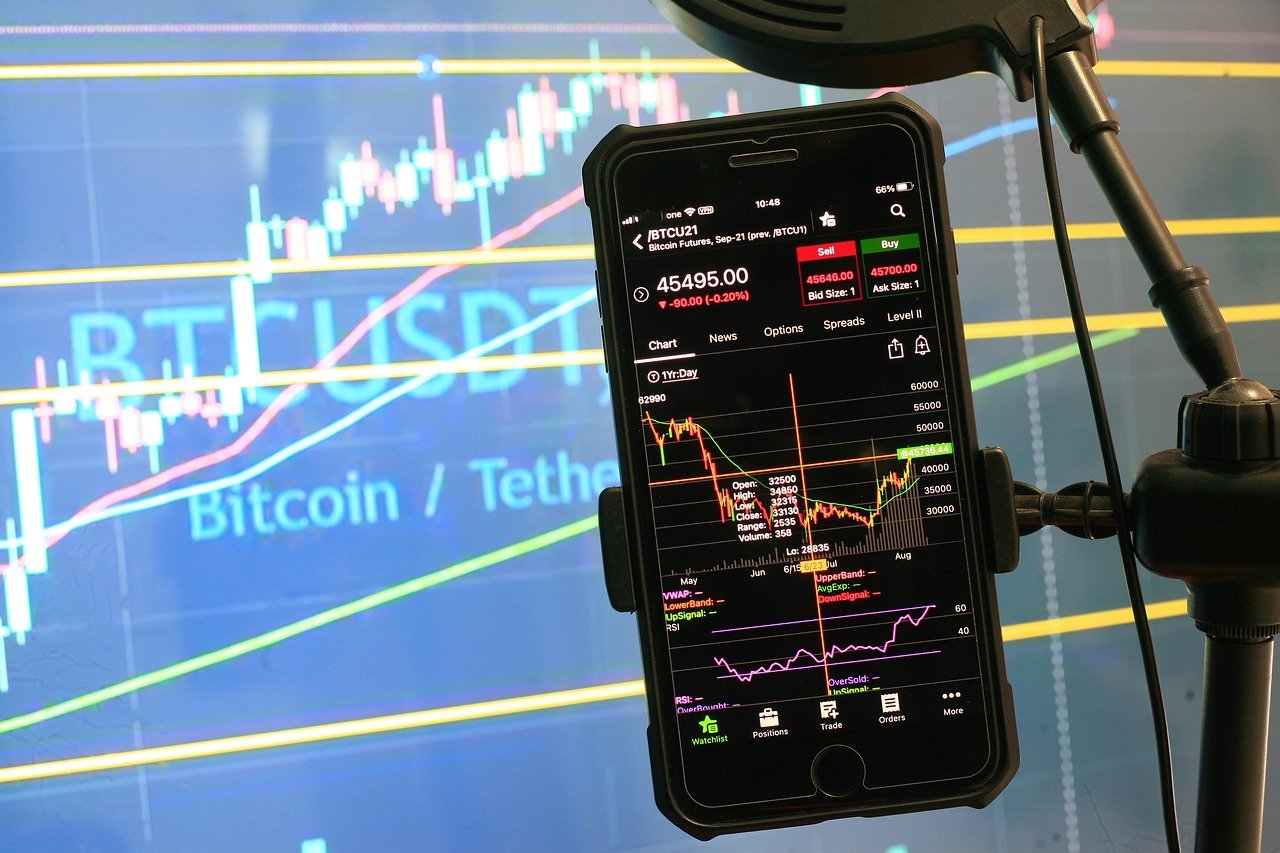Navigating the exhilarating and sometimes turbulent world of cryptocurrency markets can feel like riding a rollercoaster. From Bitcoin’s groundbreaking debut to the explosion of DeFi and NFTs, the crypto landscape is constantly evolving. Understanding the nuances of this market, its key players, and the factors driving its volatility is crucial for anyone looking to participate, whether as a seasoned investor or a curious newcomer. This guide will provide a comprehensive overview of the crypto markets, offering insights and practical advice to help you make informed decisions.
Understanding Cryptocurrency Markets
Cryptocurrency markets, unlike traditional financial markets, operate 24/7 and are decentralized. This means there’s no central authority, like a bank or government, controlling them. This unique characteristic offers both benefits and challenges for participants.
Decentralization and its Impact
- Increased Accessibility: Anyone with an internet connection can participate in crypto markets, regardless of their location or financial status.
- Transparency: Transactions are recorded on a public blockchain, making them transparent and verifiable. However, while transactions are public, the identities of the transacting parties can remain anonymous.
- Reduced Fees: Without intermediaries, transaction fees are typically lower than those associated with traditional banking systems.
- Volatility: The lack of central control contributes to the high volatility of crypto assets, as prices are more susceptible to market sentiment and news events.
Example: A single tweet from a prominent figure can significantly impact the price of a cryptocurrency.
Key Participants in the Crypto Market
Understanding who is active in the crypto space is key to gauging market sentiment and anticipating potential movements.
- Retail Investors: Individual investors who buy and sell cryptocurrencies, often driven by speculation and trends.
- Institutional Investors: Hedge funds, venture capital firms, and other large financial institutions that invest in crypto assets. Their entry into the market often signals increased legitimacy and stability.
Example: Tesla’s investment in Bitcoin in 2021 spurred a significant rally in the crypto market.
- Miners: Individuals or companies that validate transactions on the blockchain and are rewarded with newly created cryptocurrency. They play a crucial role in maintaining the security and functionality of many cryptocurrencies.
- Exchanges: Platforms where cryptocurrencies are bought, sold, and traded. Examples include Coinbase, Binance, and Kraken.
- Developers: Individuals and teams who create and maintain cryptocurrency projects, including the underlying blockchain technology, wallets, and applications.
- Project Founders: The individuals or groups who conceive and launch new cryptocurrencies or blockchain-based projects.
Factors Influencing Crypto Prices
Several factors contribute to the price fluctuations in the cryptocurrency market. Understanding these drivers is essential for making informed investment decisions.
Supply and Demand
Like any market, the price of a cryptocurrency is primarily determined by the forces of supply and demand.
- Limited Supply: Some cryptocurrencies, like Bitcoin, have a fixed maximum supply. This scarcity can drive up prices as demand increases.
Example: Bitcoin’s capped supply of 21 million coins is a key factor in its perceived value as a store of value.
- Increasing Demand: Factors such as increased adoption by businesses and individuals, positive news coverage, and regulatory clarity can all drive up demand for cryptocurrencies.
Market Sentiment
Public perception and media coverage play a significant role in shaping market sentiment, which can have a profound impact on crypto prices.
- Fear of Missing Out (FOMO): When prices are rising rapidly, investors may rush in to avoid missing out on potential gains, further driving up prices.
- Fear, Uncertainty, and Doubt (FUD): Negative news or events can create fear and uncertainty, leading to sell-offs and price declines.
Example: Security breaches or regulatory crackdowns can trigger widespread FUD and result in significant price drops.
Technology and Innovation
Advancements in blockchain technology and the emergence of new applications, such as DeFi and NFTs, can generate excitement and attract new investors to the crypto market.
- DeFi (Decentralized Finance): DeFi platforms offer a range of financial services, such as lending, borrowing, and trading, without the need for traditional intermediaries.
- NFTs (Non-Fungible Tokens): NFTs are unique digital assets that represent ownership of items such as artwork, collectibles, and virtual real estate.
- Smart Contracts: Automated agreements written into the blockchain code that execute when specific conditions are met. This technology enables a wide array of decentralized applications.
Regulatory Landscape
Government regulations and policies can have a significant impact on the crypto market.
- Positive Regulations: Clear and supportive regulations can provide legitimacy and attract institutional investors.
- Restrictive Regulations: Conversely, regulations that restrict or ban the use of cryptocurrencies can negatively impact prices.
Example: China’s ban on cryptocurrency trading and mining has repeatedly triggered market downturns.
Navigating Crypto Exchanges and Wallets
Choosing the right crypto exchange and wallet is crucial for securely buying, selling, and storing your cryptocurrencies.
Selecting a Cryptocurrency Exchange
When choosing an exchange, consider the following factors:
- Security: Look for exchanges that have robust security measures in place to protect your funds, such as two-factor authentication and cold storage of assets.
- Fees: Compare the trading fees charged by different exchanges. Lower fees can significantly impact your profitability.
- Liquidity: Choose an exchange with high liquidity, which means there are many buyers and sellers, making it easier to execute trades quickly and at favorable prices.
- Cryptocurrency Selection: Ensure the exchange offers the cryptocurrencies you are interested in trading.
- User Interface: Opt for an exchange with a user-friendly interface that is easy to navigate, especially if you are a beginner.
Understanding Cryptocurrency Wallets
Crypto wallets are used to store your private keys, which allow you to access and manage your cryptocurrencies. There are several types of wallets available:
- Hardware Wallets: Physical devices that store your private keys offline, providing the highest level of security.
Example: Ledger and Trezor are popular hardware wallet brands.
- Software Wallets: Applications that can be installed on your computer or mobile device. They are convenient but less secure than hardware wallets.
- Web Wallets: Wallets that are accessed through a web browser. They are the least secure option, as your private keys are stored on a third-party server.
- Paper Wallets: A physical piece of paper that contains your private and public keys. This is a very secure method as long as the paper is stored safely.
- Important Security Tip: Always enable two-factor authentication (2FA) on your exchange account and wallet to add an extra layer of security.
Strategies for Investing in Cryptocurrency
Investing in cryptocurrency requires a well-thought-out strategy to mitigate risk and maximize potential returns.
Diversification
- Don’t put all your eggs in one basket: Spread your investments across different cryptocurrencies to reduce the impact of any single asset’s performance on your overall portfolio. Consider investing in both established cryptocurrencies like Bitcoin and Ethereum, as well as smaller, more speculative altcoins.
Dollar-Cost Averaging (DCA)
- Invest a fixed amount regularly: Dollar-cost averaging involves investing a fixed amount of money at regular intervals, regardless of the price of the asset. This strategy can help reduce the impact of volatility by averaging out your purchase price over time.
Example: Instead of investing $1,200 in Bitcoin all at once, you could invest $100 per month for 12 months.
Risk Management
- Set stop-loss orders: A stop-loss order is an instruction to sell an asset when it reaches a certain price, limiting your potential losses.
- Only invest what you can afford to lose: Cryptocurrency investments are highly speculative, and there is a risk of losing your entire investment. Never invest money that you cannot afford to lose.
- Do your own research (DYOR): Thoroughly research any cryptocurrency before investing in it. Understand the underlying technology, the team behind the project, and the potential risks and rewards.
Long-Term vs. Short-Term Investing
- Long-Term (Hodling): Holding cryptocurrencies for the long term, often based on the belief that the underlying technology will appreciate in value over time. This strategy requires patience and a strong conviction in the long-term potential of the assets.
- Short-Term (Trading): Actively buying and selling cryptocurrencies to profit from short-term price fluctuations. This strategy requires technical analysis skills and a high tolerance for risk.
Conclusion
The cryptocurrency market presents both significant opportunities and risks. By understanding the underlying technology, key market drivers, and effective investment strategies, you can navigate this dynamic landscape with greater confidence. Remember to prioritize security, manage your risk, and always do your own research before making any investment decisions. The key to success in the crypto market lies in continuous learning and adapting to the ever-evolving landscape.



